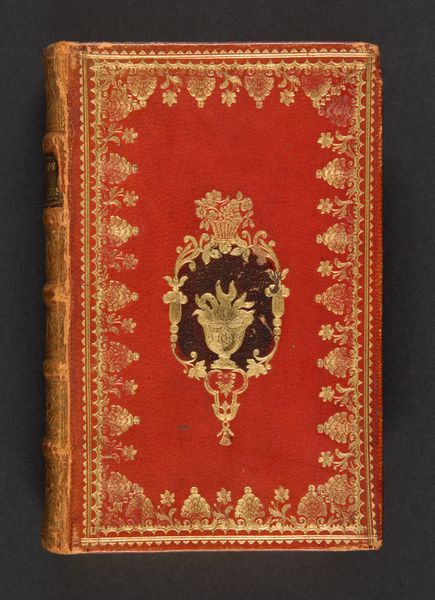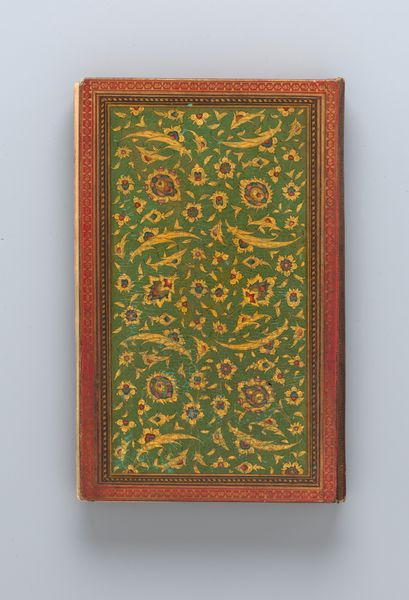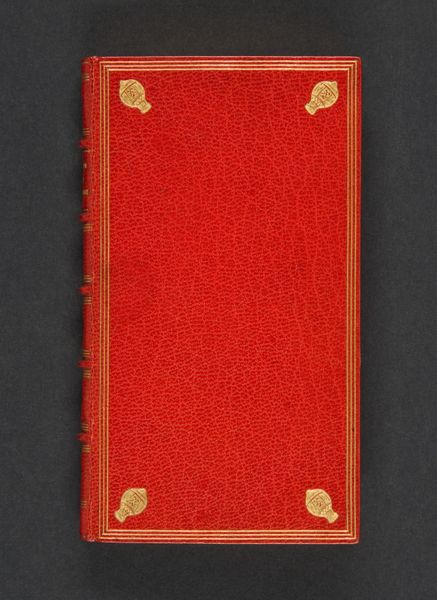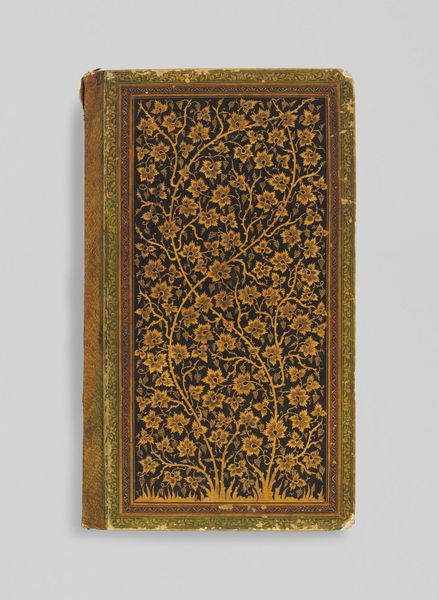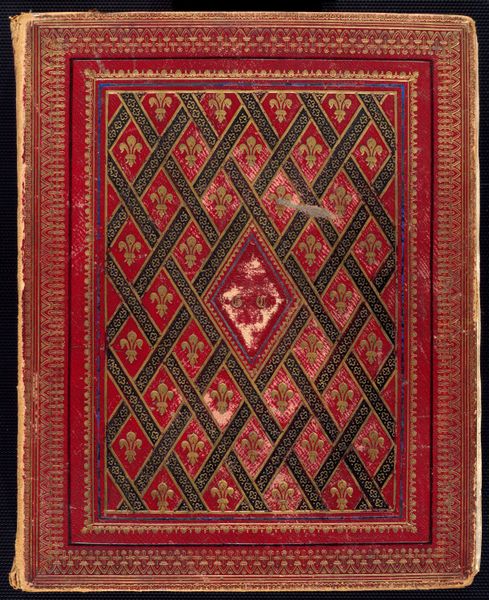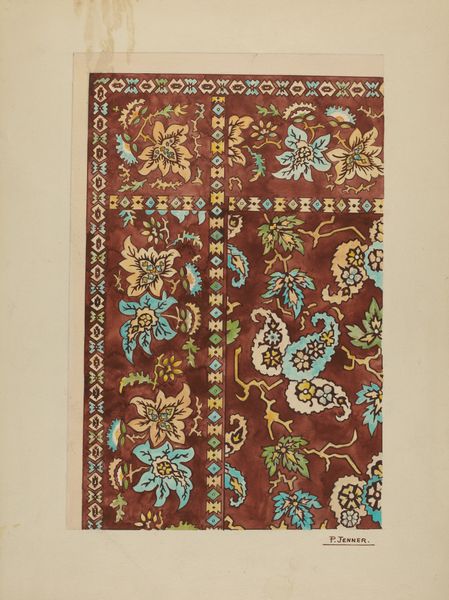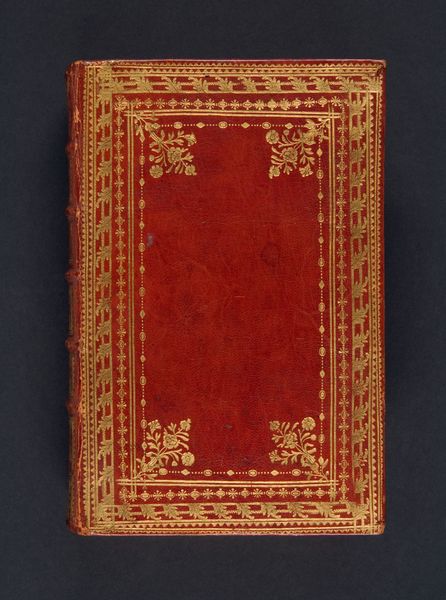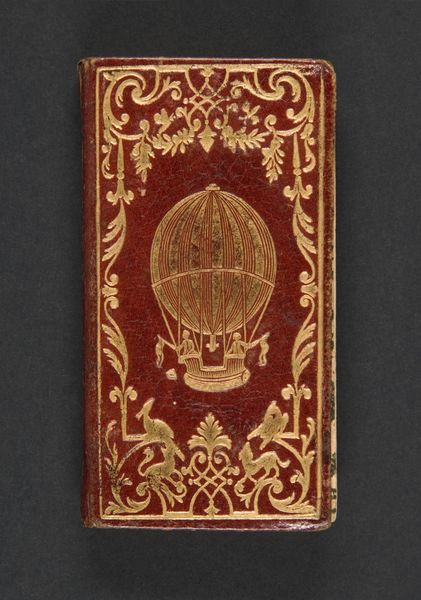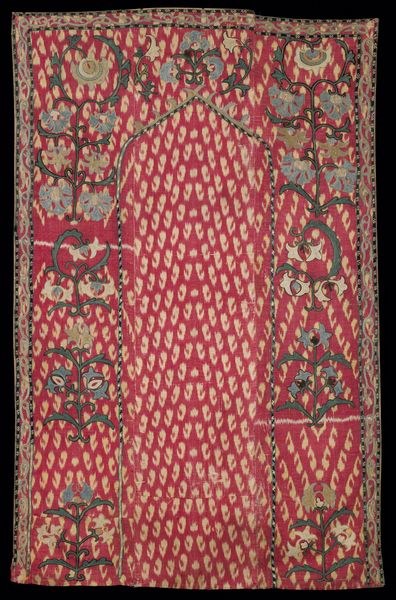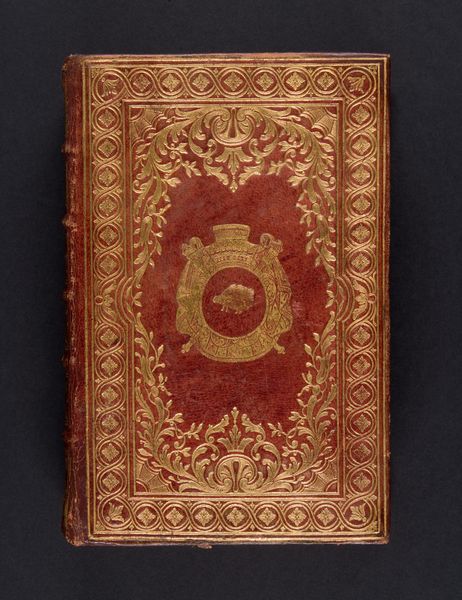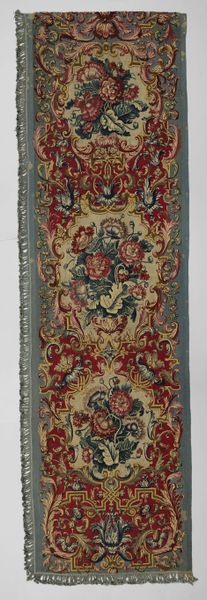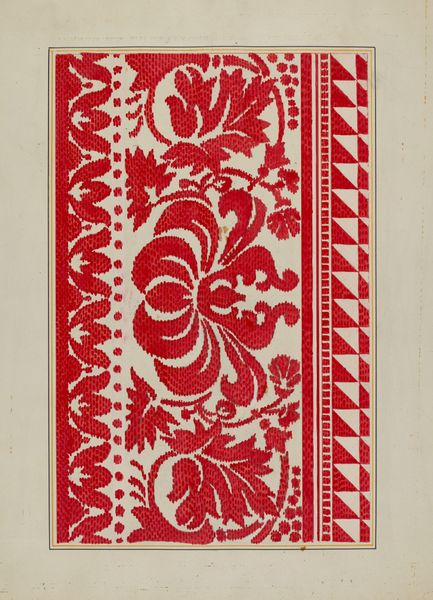
L'office de l'Église en françois contenant les offices pour toute l'année, plusieurs prières tirées de l'écriture-sainte & des saints pères, les hymnes en vers françois, avec une instruction pour les fidèles 1792
0:00
0:00
Dimensions: [12], 612, [2] pages ; Height: 7 1/16 in. (18 cm)
Copyright: Public Domain
Curator: Here we have an example of decorative art, a book titled "L'office de l'Église en françois," dating from 1792, presently housed at the Metropolitan Museum of Art. It reflects a pivotal moment for religious practice during a revolutionary period in France. Editor: It’s strikingly opulent, isn’t it? That bold red cover, punctuated with green floral motifs and shimmering gold details gives it an almost defiant grandeur. Almost as though daring you to notice it in a crowd. Curator: Absolutely, and it speaks volumes about the enduring presence, and indeed influence, of the Church even as the aristocracy waned. Consider the elaborate tooling and gilding; these were highly skilled trades embedded in a specific economic and social fabric of the era. The Church was still a major client. Editor: Right, there's a push and pull happening. A yearning for tradition represented by the baroque, but also hints of radical change in the simple repeated pattern. What message did the original owner seek to signal by carrying such a piece? Piety, resistance, maybe a little of both? Curator: It also raises questions about accessibility. "L'office de l'Église en françois" indicates the text is in French, not Latin, suggesting a broader reach to the literate populace, while the extravagant binding obviously limits physical ownership to wealthier segments of that population. Editor: Precisely! I wonder, did the text also adopt some of the revolution's messaging? Perhaps reflecting some of the democratizing of religious thought gaining prominence? Was this Church looking outward in a way, engaging in discourse? Curator: Further inquiry would certainly be required to delve into the specific adaptations in doctrine contained within. The very existence of such an elaborately designed religious object during such upheaval underscores that historical narratives are complex, revealing ongoing intersections of class, religion, and politics. Editor: Well, I leave with questions of subversion. How do institutions signal change while simultaneously upholding tradition? How do everyday objects challenge and confront norms and values? Food for thought, indeed.
Comments
No comments
Be the first to comment and join the conversation on the ultimate creative platform.
